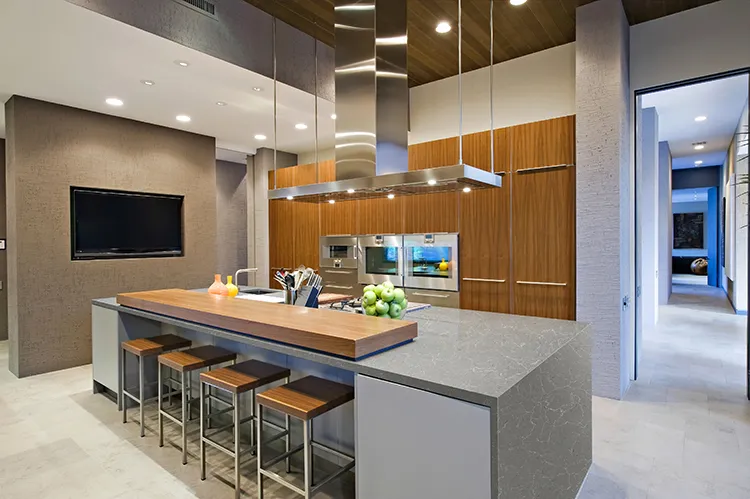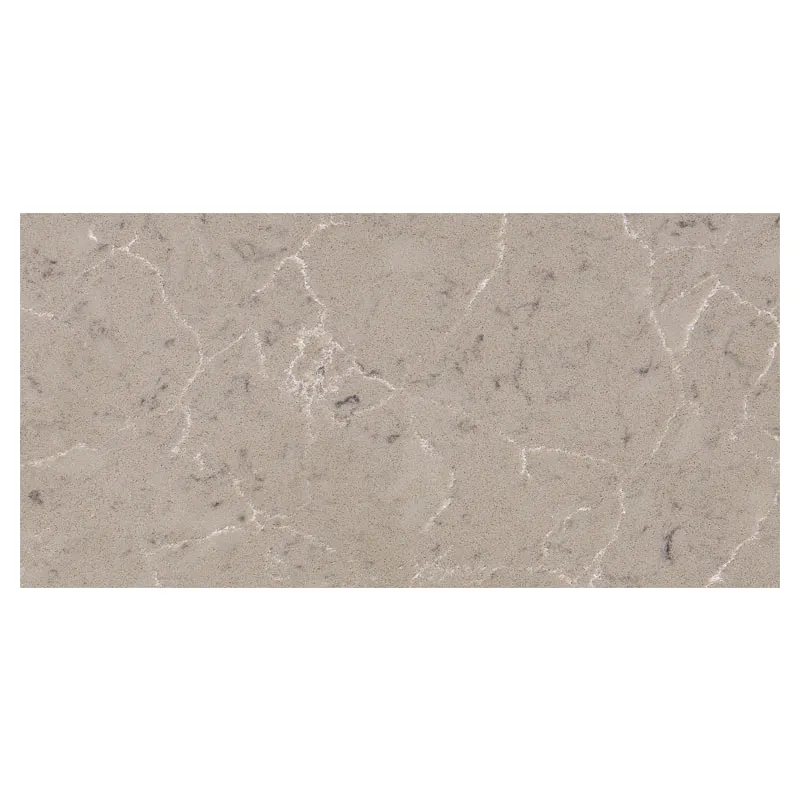In modern home décor, marble countertops are favored for their high-end, elegant appearance. However, consumers often face a question when making a choice: What are the differences between real marble countertops and artificial marble countertops? There are significant differences between the two in terms of appearance, performance, price and user experience.
This article will analyze the differences between real marble and artificial marble from multiple perspectives to help consumers make a wise choice.

What is real marble? How is its composition different from that of artificial marble?
1. What are the ingredients of real marble?
Real marble is a natural stone, a metamorphic rock formed by calcium carbonate (CaCO₃) after hundreds of millions of years of geological processes in a high temperature and high pressure environment. Its main component is calcite, whose content usually accounts for more than 90% of the total composition of marble. Due to the influence of various minerals during the formation process, the texture and color of real marble have unique natural beauty.
Real marble is characterized by random texture and hard but slightly brittle texture. Each piece of real marble is unique, like a natural work of art, and is favored by consumers who pursue personalized home design.
2. What are the ingredients of artificial marble?
Different from real marble, artificial marble is a composite material that is mixed with natural stone powder, resin, pigments and other materials and processed through vacuum vibration, high-pressure molding and other processes. Its composition has a lower proportion of calcium carbonate and a higher proportion of resins and pigments, giving artificial marble a more varied appearance and a more uniform texture.
Compared with natural stone, the manufacturing process of artificial marble is more controllable, and the texture and color can be designed according to needs. Therefore, artificial marble has a higher appearance consistency and is suitable for families that have strict requirements on the overall decoration style.
What is the difference in appearance between real marble and artificial marble?
1. What makes the texture of real marble unique?
The texture of real marble comes from minerals and impurities mixed in during natural deposition, creating a random, unreplicable pattern. Even different parts cut from the same marble may have completely different textures. This "uncontrollable beauty" is the unique feature of natural stone, and it is also one of the reasons for its high price.
However, the randomness of this natural texture puts higher requirements on design and matching. If not selected during the construction process, texture inconsistency may occur.
2. Why is artificial marble more uniform in color and texture?
Artificial marble uses a synthetic process that can precisely control the distribution of texture and color. This controllability makes artificial marble look more consistent, whether it is the continuity of texture or the saturation of color to meet design needs.
Although artificial texture lacks the natural charm of real marble, the uniformity of artificial marble is an advantage for modern homes pursuing a minimalist style.
What is the performance difference between the two?
1. Which material is more durable?
Although real marble is hard, its durability is limited. The main component of calcium carbonate makes it very sensitive to acidic substances (such as lemon juice, vinegar, etc.), and it is prone to chemical reactions leading to corrosion marks on the surface. In addition, real marble may absorb water in a high-humidity environment, causing the internal structure to weaken or even crack.
In contrast, artificial marble exhibits better corrosion resistance and water resistance due to its high proportion of resin. It is not easily eroded by acidic substances and does not absorb water and swell like real marble, so it is more durable.
2. How about stain resistance and ease of cleaning?
The surface of artificial marble has been specially treated to make it smoother and denser, making it difficult for stains to penetrate into its interior, making it very easy to clean. Real marble easily absorbs liquids due to its microporous structure, and may leave permanent stains if not cleaned in time.
For example, if red wine or coffee is spilled on a real marble countertop, if it is not wiped quickly, it is likely to penetrate into the stone and form spots that are difficult to remove. Artificial marble performs better in this regard.

Is the difference in price worth paying attention to?
1. Why is real marble more expensive?
Due to the complex process of natural formation and the high cost of mining and processing, the price of real marble is usually much higher than that of artificial marble. In addition, the scarcity of real marble is also an important reason for its high price. Certain high-end varieties, such as Italian Carrara marble, are even considered luxury goods and are more expensive.
2. Is artificial marble more economical?
Artificial marble is relatively affordable. Because its manufacturing process can be produced on a large scale and the cost is effectively controlled, the price on the market is usually only half or even lower than that of real marble. This makes artificial marble the first choice for consumers who have a limited budget but want to pursue the texture of marble.
What are the differences during construction and installation?
1. What should you pay attention to when installing real marble?
Due to its heavy weight, real marble has higher requirements on installation technology and countertop support structure. During the installation process, professional equipment must be used for cutting and handling. A little carelessness may cause the stone to crack. In addition, the brittleness of real marble makes the corners more susceptible to damage, so it requires special protection.
2. Is artificial marble easier to install?
The density and weight of artificial marble are lower than real marble, and construction and transportation are relatively simple. Since it is more resistant to cracking, there is less chance of edge chipping when cutting. In addition, artificial marble can be spliced to achieve seamless connections, which is often difficult to achieve with real marble.

What are the differences between the two usage scenarios?
1. What scenes are real marble suitable for?
Real marble, with its natural beauty and noble temperament, is often used in luxury decoration scenes, such as high-end kitchens, bathrooms, living room background walls, etc. However, due to its sensitivity to acid and alkali substances, real marble countertops may require more careful maintenance during actual use in the kitchen.
2. Why is artificial marble more suitable for daily use?
Because of its durability and stain resistance, artificial marble is suitable for environments with frequent use, such as kitchen countertops, bathroom countertops, dining table tops, etc. Its ease of cleaning and versatile design make it a practical choice for modern homes.

